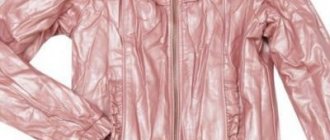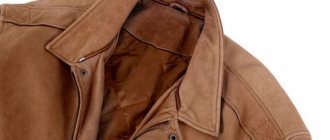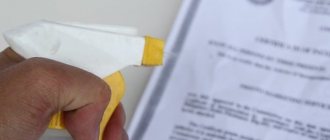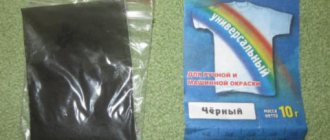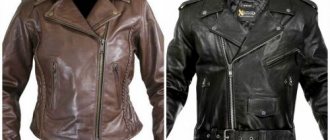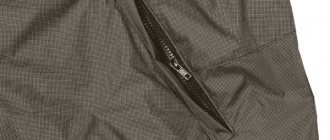Polyester outerwear is particularly popular among consumers. It is affordable, practical to wear and does not require special care, like capricious items made of wool or fur.
But even such things can quickly lose their original appearance if the basic rules of washing, drying and, of course, ironing are neglected.
Read the article on how to iron a polyester jacket at home.
On a note
Experts recommend taking your time when steaming jackets made from different fabrics. The first step is to let the product hang; it may not be necessary to steam it. However, if the folds and creases have not disappeared, then the steaming procedure cannot be avoided.
To steam a jacket, you can use various devices:
- Special steamer.
- You can take an iron equipped with a vertical steam option. In this case, it is necessary to adjust the device so that the heating temperature is minimal, this is necessary for the formation of steam.
- Use a steam brush.
- Use a steam generator.
- For the steaming procedure, you must use clean, filtered water. This measure will avoid damage to the product and ensure flawless operation of the selected device.
- You should start steaming your jacket only after the water in the device has warmed up. This guarantees an even and uniform stream of steam.
How to deal with deep folds or creases
If a wrinkled jacket shows severe creases, you can lubricate it with grease, moisturizer, clear shoe polish, or leather spray. They will make the skin more flexible and it will smooth out better.
After this, you can carry out the steaming procedure, repeating it if necessary. If the folds are not eliminated, the leather jacket can be ironed, following all the necessary rules. In this case, you cannot increase the temperature above 100 degrees and increase the exposure time on the area. If heat treatment has no effect, it can be repeated only after the jacket has completely cooled.
Instructions: how to steam a jacket correctly
- It is important to maintain the distance correctly. The myth that the closer the device is, the more ideal the result, it’s time to destroy it. If the distance is too small, technical burns cannot be avoided. The optimal distance is considered to be from 10 to 20 centimeters from the product.
- When steaming a jacket, there is no need to rush, as the gradual straightening of creases and folds will ensure the product is in perfect condition.
- It is important that the jacket is clean before steaming, so it is recommended to brush it first. If there are no prohibitions on washing the product, then you need to wash it first, and only then steam it.
- To ensure comfort while working, it is worth sending the jacket on wide hangers that fit the size.
- It should be taken into account that jackets made from various fabrics must be steamed exclusively from the outside.
- Before work, it is recommended to carry out a test to determine the reaction of the fabric to steam.
- Only water should be poured into the device, no chemical components.
- You need to start working with small parts of the product: sleeves, pockets, collar, hood. It is recommended not to keep the steamer in one place for a long time; you need to move it smoothly over the area of the jacket.
- In order not to spend a lot of time steaming your sleeves, you need to stuff them with a towel or any linen.
- After the procedure for steaming the jacket is completed, do not rush to put it in the closet. Just shake the product and hang the jacket on hangers in a ventilated area for a while. It is important that there are no heat sources or heating devices nearby, otherwise deformation or damage to the product cannot be avoided.
- On average, the steaming procedure takes half an hour. The time may vary in one direction or another depending on your dexterity and the length and style of the product.
After the product has dried and taken on the ideal shape and appearance, it can be put away in the closet.
- Often the jacket fabric behaves differently after steaming. It may seem that the creases and folds have become even deeper and brighter, however, it is worth finishing the steaming procedure, letting the product hang on its hangers - and after the item has completely dried, all the creases and folds will straighten out.
- If, after steaming, the surface of a jacket made of fleecy fabric becomes uneven, then do not rush to throw away the item. It is enough to let it dry completely, then you need to treat the surface with a brush.
Jackets can be different in length and style, however, each product requires proper care at home. Thus, jackets made of drape, padding polyester, cashmere and cotton are recommended to be steamed if the creases do not disappear after sagging. Steam your jackets correctly and enjoy stylish looks in any weather!
Outerwear loses its original appearance if improperly transported or stored. Therefore, you may need to iron your jacket at home. This can be done in various ways, the main thing is to be careful and attentive.
To iron outerwear (especially if it is a branded item), it is best to go to a dry cleaner. There are special presses that are similar to irons, but much heavier and larger. At the same time, the design provides temperature conditions for different products and fabrics.
Often, such devices are bought by outerwear stores. You can go there and try to ask the sellers to fix your jacket. However, there is not always a specialized store or dry cleaner near your home. In this case, you can use one of several ways to smooth out your favorite item.
If your jacket is wrinkled as a result of being stored folded, the best place to start is by hanging it on a hanger. In this case, you need to choose wide hangers that are exactly the right size. It is worth considering that a hanger that is too long will deform the clothes even more, and a hanger that is too short will not bring the desired result. As a rule, the jacket takes on a neat appearance after hanging on a hanger for 1-2 days.
To smooth a product made of leather or leatherette, it is most convenient to use an ordinary sprayer. Use it to wet the inside of the item. To do this, first turn the jacket inside out, and then carefully spray over its entire surface. However, do not overdo it: water should not flow down during the drying process. After this, hang the jacket on the hanger. Carefully straighten out all the folds and leave it to dry in the shade.
Another option is possible: you can hang the product on a hanger and treat it with steam. To do this, turn on hot water in the bathroom and hang your jacket in this room. Close the door and leave the water running for 30 minutes. In this case, be sure to ensure that no splashes of water come into contact with the material. Otherwise, you will have a new problem - you will need to return it to its previous appearance. After the specified time has passed, turn off the water, then remove and hang the jacket in the room or hallway. After a day, the wrinkled areas will smooth out.
The task of dealing with creases and folds on a jacket is much easier if you have a manual steam generator. To smooth the product with its help, direct a stream of steam to the problem area from a distance of at least 10 centimeters from the surface. Make sure that no water droplets from condensation appear on the surface of the material. Clothes should not get wet from the water, but simply be saturated with steam. After completing the procedure, hang the jacket on a hanger and wait for some time - from several hours to 1 day.
If you don't want to wait for the jacket to dry and regain its original appearance, you can use a regular iron. This procedure must be carried out very carefully, turning on the iron to the minimum setting. This option is not suitable for leather with an embossed pattern or pressed material. In addition, do not iron directly on the surface of the material. It is better to use soft cotton fabric or paper as a pad.
You can iron the item from the wrong side, but in this case a gasket is also needed. This is necessary because in most cases the lining fabric of jackets is quite thin.
There is a folk way to smooth a jacket made of leather or leatherette. You just need to treat its entire surface with a cloth soaked in glycerin. This procedure should be repeated several times. This will give the artificial leather elasticity and shine. Then you need to hang the jacket on a hanger and leave it for a while until it straightens on its own.
In any case, it’s easier to store outerwear correctly than to worry about how to iron them. To do this, each time after wearing, hang the jacket straightened out on a hanger with wide shoulders, and when storing for a long time, fasten the buttons, zipper or clasp. Experts also recommend additionally using a cover designed specifically for jackets. Before using it, care must be taken to ensure that the clothes are thoroughly dried.
The synthetic material polyester is used mainly for the manufacture of outerwear - autumn jackets and coats. Such things are durable, hold their shape perfectly and practically do not wrinkle. But if wrinkles appear during transportation or storage, it is not easy to remove them. You can iron polyester at home using several methods. However, you don’t always need an iron; it’s safer to use steam.
Attention! Polyester wrinkles due to improper care and cleaning. The maximum permissible washing temperature is 40°C. To prevent wrinkles from appearing, when washing by machine, use the lowest spin speed; when washing by hand, just let the water drain without twisting the item. Dirt and lint stick to clothes less if you add a special antistatic agent for fabric to the water during the last rinse.
Ironing woolen outerwear
Any coat has its own cutting and sewing features, which only add to the hassle when ironing at home, so try to use ironing as a last resort.
Steaming
Use steaming, especially if the coat is made of alpaca or cashmere. To do this, you can use not only a special steamer, but also a regular modern iron with a vertical steam function.
During normal ironing, you can easily burn wool fibers and forever ruin the appearance of a stylish item.
Alternative method
Try steaming wrinkled fabric in the bathroom: fill up with hot water, let in a lot of steam and hang the coat over the bathtub. When the steam disappears after a few hours and the water has cooled, take the product into the room, let it dry and hang.
Traditional ironing
If there is no steamer in the house, you will have to resort to using an iron. Let’s say right away that the manipulation will be difficult, you will have to act carefully. Here is the algorithm for your actions:
Never start ironing cashmere or alpaca items immediately after washing: the material needs to dry completely. Set the iron to the minimum temperature. Iron a small area through gauze; if the surface is not completely smooth, set the heating mode to a higher setting. On the front side, you need to iron only through a damp pad, on the back side - without a protective layer of fabric. First, go over the iron from the wrong side, and after a few minutes, when the surface has cooled, take hold of the front side
Experienced housewives do not recommend ironing a dark cashmere coat from the inside out: unsightly marks will remain at the seams. Place part of the product on the ironing surface and carefully iron it through a damp cloth. Iron fabrics containing alpaca wool only in the direction of the pile. Smooth out the sleeves: place them on the special ridge on the ironing board
Next, grab the back, collar, lapels. Iron your shoulders by placing a hard pad under the material. Finish the seams last, using the tip of the iron.
other methods
Lay the coat out on a flat surface and gently smooth out the folds and folds with damp palms. Cover the wrinkled areas with a damp terry towel and leave in this position overnight. Put the product on a hanger in the morning and let it hang for a while. Using this method, drape material is perfectly smoothed.
Methods for ironing polyester
Iron (traditional).
Requires a minimum of time and costs, the disadvantage is the risk of ruining the thing.
Technology:
- Wet the item in cold water, let the fabric dry slightly without spinning, but remain damp.
- Study the label; it should indicate the ironing temperature (usually the same as the “Silk” mode). The fabric may consist not only of polyester, but also of other materials, so the temperature for different things will be different.
- Turn the clothes inside out and set the iron to the desired temperature. Check to see if the fabric is damaged in an inconspicuous area, such as under the collar. Often a piece of material comes separately with the coat; this is an ideal prototype.
- Start ironing the polyester from the lining, without pressing too hard on the fabric. To be on the safe side, you can place a wet cotton towel or damp gauze under the iron.
- If the item remains wrinkled, you will have to iron the outside. Do this only through damp gauze, trying not to hold the iron on one area for a long time.
- Immediately after ironing, do not put the item in the closet, let it hang on hangers for 2-3 hours at room temperature, then the dress, jacket or coat will completely dry and the remaining wrinkles will disappear.
Steaming.
Safer than regular ironing, but requires a steam generator (clothes steamer) or an iron with a vertical steam function.
In addition to ironing, it removes stains and unpleasant odors. Garment Steamer
Technology:
- Hang the item on hangers. Select the “For delicate fabrics” mode or another suitable one according to the instructions.
- While steaming, keep the device a few centimeters away from the polyester.
- Process the item from top to bottom: first the back, sleeves, shoulders, then the front part and collar. Repeat the procedure if necessary.
Folk method.
If you don’t have an iron or steamer in the house, you can iron the polyester with steam in the bathroom or bathhouse.
Technology:
- Hang the item on hangers and fasten all the buttons.
- Take it to the bathroom and lightly smooth it with wet hands until the material becomes damp.
- Turn on the hot water or heat the bathhouse, close the door to the room. Steam in a closed space will straighten out all the wrinkles in the polyester. But this takes time - at least 5-10 minutes.
- Take the ironed item into the room. Once dry, place it in a closet.
If the proposed methods do not help, you will have to dry clean the polyester.
Among modern materials actively used for sewing wardrobe items, synthetic fabrics occupy a leading position. The excellent quality characteristics of products made from fabric containing polyester fibers have made items made from such materials incredibly popular. Jackets made of polyester or bologna are affordable, strong, beautiful and durable, and with proper care, such products will last a long time without disappointing their owners with quality.
Multi-component “bomb”
A quick and effective home remedy for wrinkles in artificial leather. To prepare it you will need drinking water, table vinegar (9% alcohol solution) and fabric softener - all products in equal proportions.
Procedure:
hang clothes on hangers over the bathtub or sink; mix the ingredients; pour the product into a container with a spray bottle; Spray the mixture liberally onto the surface of the jacket (raincoat, etc.)
d.), paying special attention to the places of the deepest dents; leave the clothes to dry in the bathroom. Any of the described operations with leatherette should be carried out carefully
Then the jacket or raincoat will again acquire an excellent appearance and will delight its owner for a long time
Any of the described operations with leatherette should be carried out carefully. Then the jacket or raincoat will again acquire an excellent appearance and will delight its owner for a long time.
When one season gives way to another, many of us put warm clothes in the far corner of the closet. They are placed on shelves and compacted, which leads to the appearance of folds, creases and visible traces of storage on outerwear.
But as soon as the wind blows and it gets cooler, their favorite things are released from captivity, wrinkled and unkempt.
It is possible to quickly solve such a problem using several methods, using available tools
, which can be found in every housewife’s home. Similar methods and step-by-step instructions will be given in the article below.
Properly ironing a jacket, coat or bag made of leatherette means extending their service life and saving yourself from additional expenses. Things made from genuine leather are more expensive and more difficult to care for and wear, while leather substitutes cost less and are more durable, so they are deservedly popular.
After
taking the item out, simply hang it on a hanger.
Give her the opportunity to deal with it on her own, without your help. If within a few days the folds and creases on the leatherette jacket have not gone away, then you should move on to more drastic measures - applying temperature or hot steam.
Ironing
Using this method, the main condition will be maintaining the temperature (not higher than 30 degrees),
turning off the steam function on the iron, minimal pressure on the device and ironing the item turned inside out.
You should also understand that if done incorrectly, the jacket can be irreparably damaged.
Actions must be clear, accurate and step-by-step:
- Set the iron to delicate ironing mode and turn off the steam function. To avoid deformation of the leather under the influence of heat, check the correct temperature using the tip of the iron sole, on the wrong side of the item, where it is not visible.
- Turn the jacket with the lining facing up. First, smooth out any visible unevenness with your hands.
- Place a piece of smooth cotton fabric over the areas where the leatherettes come into contact, as sticking may occur under the influence of temperature. Be sure to do this when the lining material is thin or missing.
- Turn it back inside out.
Hang on a hanger, adding volume using filler from disposable bags or strands of towels. Another option is to put an ironed jacket on yourself and walk in it for about an hour so that it remembers the contours of your body.
Steaming
A more gentle and safe way. In order for everything to work out well, you need to do the following:
- Find soft hangers that fit the size, roll up rolls of terry towels and insert them into the sleeves.
- For the process, take a steamer or iron (set the vertical steaming mode).
- We process small areas, at a distance of 10-15 cm from the item.
- We act for 5-10 seconds on those places where there are irregularities.
- Leave it alone for 30 minutes.
Hairdryer - ironing with hot air
If you are afraid to use an iron and do not have a steamer, take a hair dryer to help.
Additionally, for the procedure, prepare a wet handkerchief or piece of fabric, a blanket.
- Roll up the blanket and put it in your jacket.
- Cover the place where hot air comes out of the hair dryer with a piece of cloth.
- Turn on high mode. Blow the jacket at a distance of 20 cm.
- Leave the item to cool.
- Try again if not all areas are smoothed out.
Features of caring for polyester products
Innovative technologies have made it possible to diversify the wardrobe of a modern person with things made of polyester. Designers willingly work with this material, creating dresses and the thinnest blouses, and, taking into account the hydro- and heat-protective properties of the fabric, they use it to create original models of demi-season raincoats, winter jackets or down jackets. In order for clothes to maintain their impeccable appearance for longer, it is necessary to adhere to the manufacturer’s recommendations, which indicate on the label the washing and ironing temperatures for a particular product.
To prevent the thinnest fabric from becoming deformed, you should know how to wash a polyester blouse or a blazer:
- turn the product inside out to avoid deformation of the fibers on the front side of the fabric;
- select the delicate mode in the washing machine;
- use washing powder only for synthetic fabrics;
- the water temperature should not exceed 40 and sometimes 60 degrees;
- do not use bleaching agents;
- the spin should be gentle.
Items made of very thin fabric (dress or blouse) are recommended to be washed by hand without harsh twisting. And after washing, you need to rinse the item in warm water with the addition of vinegar. To dry, the product is straightened and hung on hangers until completely dry. Most things made of polyester, nylon or raincoat fabric do not need to be ironed after washing with proper spinning, but just straightened out on a hanger. But if there is a need to eliminate dents on the surface of the product, then you need to be on alert so as not to hopelessly spoil your favorite thing. To do this, you need to know how to iron polyester correctly. It is recommended to heat the soleplate of the iron to the minimum temperature, then iron the wrinkled area through a damp cotton cloth.
Known for its durability and excellent waterproof properties, outerwear is at the peak of its popularity today. Practical products have proven themselves to be worn well. But after washing, it may be necessary to straighten out wrinkles or creases. Recommendations on how to iron a polyester jacket without damaging the synthetic fabric are outlined on the product label, so do not ignore the manufacturer's care advice. Depending on the composition, density and quality of the fabric, different temperature conditions are offered for ironing.
Considering the peculiarity of the insulation, the owner must understand how to iron a winter jacket without damaging the warming material. If it is natural fluff, then at high temperatures there is a risk of fatty dots from the axis appearing on the surface of the product. For bulky products, experts recommend using a jet of steam, which is directed at the wrinkled area.
Recommendations
If the means and methods described above helped you return your jacket to its proper form, then you most likely will not want to bring your clothes to this state again.
To ensure your item always remains attractive, use simple but effective care tips:
Do not store leather clothing that may become wrinkled folded. Especially in cases where the item is used during a certain season. A jacket made of leather material should be stored on hangers. You can only hang clothes on a hook for a short period of time. At home and at work, you should have hangers on which to place your outerwear. Clothing made from leatherette does not tolerate excessive moisture. Because of this, they become very soft and wrinkle extremely quickly. Under such conditions, the item will quickly lose its original shape, even if you hang it on hangers. Dry air can also harm leather products. Clothes in overdried conditions will not become wrinkled or wrinkled, but they will become rough and tough, making it impossible for you to wear them any longer. Take care of your jacket using special products. The price may be high, but this way you will extend the life of the clothing significantly. Care will maintain the ideal shape of things and will not allow various abrasions and folds to form. Remember, leather items cannot be washed either by hand or in a washing machine. This material has a heterogeneous internal structure, so defects may appear on it in the most unexpected areas
If there is heavy dirt on your jacket that you cannot remove on your own, only go to a dry cleaner, where specialists are guaranteed to clean the clothes without damaging them. If you decide to iron your jacket, do it extremely carefully, otherwise you will completely ruin the item and you will have to buy a new product, since it will be impossible to return the old one to its original appearance.
By following these recommendations, you can extend its service life significantly. Your clothes will always look attractive and there will be no creases or wrinkles on them.
How to iron fabric that won't be ironed
When studying the label, which contains information about the features of caring for a product made of polyester materials, it sometimes turns out that such a thing cannot be ironed. But what about a product that has acquired an unsightly appearance after washing? How to iron a raincoat fabric that does not tolerate high temperatures.
- Stuff the sleeves with paper or fabric and hang the product in a damp room, bathroom or kitchen. Straighten the product along the contour as much as possible with your hands.
- Experienced housewives recommend how to iron a polyester dress without an iron. After all, you can do without an electrical appliance. It is necessary to straighten the product by hanging it on a hanger, and place a basin with hot water under the dress, the steam from which will rise up and naturally smooth the fabric.
Advantages of polyester fibers
What is good about polyester:
- easy to wash and dry quickly;
- resistance to stains;
- no deformation;
- good air conductivity;
- hardly wrinkles when worn;
- does not fade after washing and does not fade under ultraviolet light.
The material will remain unchanged for several seasons, the colors will be just as bright.
Properly iron and steam a synthetic fabric jacket
If, as a result of washing, the product is too wrinkled, and the owner does not know how to iron a bologna or nylon jacket correctly, you can try to correct the situation with steam, if this does not contradict the manufacturer’s recommendations on the label. For this, experienced housewives offer the following options:
- You can use the steam generator by setting it to the “Continuous steam supply” mode.
- The sole of the iron is brought close to the surface of the product, avoiding contact of the metal base with the fabric. A directed steam jet is carried out along the surface of the product. Basically, even inexperienced housewives, having carefully studied the comprehensive recommendations on the label, know how to iron a nylon jacket. The main thing is to prevent synthetic fabric from becoming coarse from exposure to high temperatures.
- You can use a damp cotton cloth, which is placed on the surface of the jacket and heated to a minimum, several times. If there are creases on the surface of the fabric, then the procedure should be repeated again until the wrinkles completely disappear.
- You can iron a product made of thick polyester with an iron without fabric, but with minimal heating of the iron sole.
If the information on the label is not saved, the resourceful housewife will not be taken by surprise by the question of how to iron the jacket correctly, because you can test the permissible temperature conditions on a piece of fabric that is attached to the product. Thin windbreaker jackets made of synthetic fabric are easier to iron from the reverse side without holding the iron in one place for a long time.
Steaming a jacket at home is not that difficult if you know a few tricks. Polyester outerwear is beautiful, practical and comfortable. Its main advantage is its resistance to pollution. But even such things have to be washed from time to time, and after this procedure the material becomes wrinkled. Not everyone knows how to smooth it out - regular ironing does not bring the desired effect. Folds and creases remain in the same place; an ideal flat surface is not so easy to achieve.
Material properties
Polyester is a component of many fabrics and gives them many advantages. The advantages of synthetic material include low cost, resistance to deformation during washing and color fastness. In addition, products made from polyester are not prone to abrasion, do not fade or shrink, are easily washed from dirt and dry fairly quickly.
The disadvantages of the material include poor ventilation and low hygroscopicity, which is due to the coarse structure of the fibers of synthetic fabrics. Polyester is actively used for sewing bedding, curtains, bedspreads, windbreakers, dresses, blouses and outerwear.
Despite the low creaseability of the material, you still have to iron things made of polyester. Synthetic fabrics in general are very demanding on temperature conditions, and polyester is no exception. This causes certain difficulties when ironing and forces you to be more careful when choosing the temperature. However, in some cases, the ironing procedure can be avoided altogether. We are talking about proper washing and subsequent drying of products, the proper execution of which will allow you to avoid using the iron.
To wash a polyester product according to all the rules, you must not use water at a temperature above 40 degrees, do not add bleaches, and soak only light-colored items.
Instead of powder, it is preferable to use liquid products. This will eliminate the possibility of an unsightly plaque that may turn yellow during ironing. When machine washing large items, such as a jacket, coat or down jacket, it is recommended to place them in the drum one at a time. Otherwise, the products will fill the entire working volume of the machine, will not stretch and will become very wrinkled.
All outer clothing should be turned inside out and placed in protective bags. If the jacket is heavily soiled on the sleeves and collar, it is recommended to remove the stains with a brush before placing them in the drum.
After the clothes are washed, they are removed from the machine, blotted with a dry towel, shaken and hung on hangers. Polyester skirts should be hung up to dry, while jackets and coats should be hung closed. It is recommended to dry the products away from heating devices, periodically straightening folds and creases with your hands.
If it becomes obvious that some places will not be able to straighten out, then you should not wait for complete drying. In this case, you need to smooth out the wrinkled area with wet hands and put it under the iron.
How to care for polyester items
With the development of technology, synthetic items have appeared in people's wardrobes. Polyester retains heat well and does not allow moisture to pass through, which is why this fabric is widely used in sewing demi-season jackets, raincoats and down jackets. To preserve the appearance for a long time, it is enough to follow the manufacturer’s recommendations for care and cleaning indicated on the label. To prevent fabric deformation, you should follow the rules for washing polyester clothes:
- To ensure that the front side retains its appearance, the item should be turned inside out before washing;
- wash only on delicate cycle;
- washing powder should be designed specifically for synthetic items;
- water temperature no more than 60 degrees, for some fabrics - no higher than 40 (at temperatures above 100 degrees the material will be damaged and deformed);
- the use of bleaches is not recommended;
- if a spin is used, then only at minimum speed;
- When rinsing by hand, you can add a little antistatic agent to the water to prevent dirt and dust from sticking to your clothes (if you don’t have it, you can use regular vinegar, diluting a few tablespoons in water).
If the fabric is too thin, it is advisable to wash it by hand without squeezing, rinse in warm water with the addition of table vinegar. Dry flat on hangers. With proper washing and spinning, items made of polyester and bologna do not need to be ironed; just hang them up and straighten them with your hands. If folds still form, then you need to iron polyester jackets carefully so as not to completely ruin the item.
Leatherette
Faux leather is very often chosen as a material for sewing clothes.
How to smooth it depends on the characteristics of the material and the method of its manufacture. Many methods suitable for natural leather are also suitable for artificial leather.
Processing should begin by studying the information on the label, including the composition and care instructions. Artificial material can be ironed from the inside out, at a minimum temperature, by steaming.
Artificial material is less plastic, has worse breathability, and is rougher. Clothing made from artificial leather lasts less and loses its appearance faster.
At the same time, the requirements for storage conditions for these clothes are the same as for genuine leather.
Correct ironing
If you did everything correctly, but after drying the synthetic fabric still has folds and kinks, you can get rid of them with an iron if you know how to properly iron polyester. The algorithm of actions is as follows:
- Carefully inspect the item; there may still be a label on which the manufacturer indicated the temperature for ironing.
- Dip the clothing in cold water, then gently wring it out and wait until the material dries.
- As a test sample on which the permissible ironing temperature will be selected, you should use a piece of the material from which the clothing is made (if there is no label), usually such a piece is on any product.
- Turn the jacket inside out and set the iron setting to “Silk”.
- Clothes made of polyester should be ironed starting with the pad, without pressing the sole of the iron on the material. To prevent damage to the fabric, you can cover it with damp gauze or a cotton towel soaked in water.
- For deep wrinkles and folds, you will have to iron the clothes on the outside using damp gauze so as not to spoil the material.
For heavily wrinkled areas, you can try increasing the temperature slightly. After ironing is completed, it is recommended not to put the clothes immediately in the closet, but to let them hang on hangers for several hours in a ventilated place. This is enough for the item to dry properly and take its original shape.
Ironing items made of polyester, bologna, nylon and other materials is much easier using a steam generator or an iron equipped with a vertical steam function. The ironing process is greatly simplified. The steaming procedure is as follows:
- Hang clothes on hangers.
- Select the mode on the steamer or iron that is most suitable for delicate fabrics.
- By holding the device at a distance of a few centimeters, you can begin steaming. You need to move from top to bottom: first the back is to be processed, then the sleeves and shoulders, and lastly the front side and collar.
The advantage of steaming is not only in smoothing out bruises, but also in the ability to remove some stains, give clothes an attractive appearance and eliminate unpleasant odors.
Using an iron
Regular ironing
To iron a polyester jacket, you need to lay it face down on the table. Afterwards, we level it with our hands. Take the iron and set its power to minimum. Place any thin rag or gauze on the jacket. Before ironing the down jacket, try ironing on a small and invisible area using gauze. While experimenting, be careful not to spoil the item. Also experiment with the temperature yourself, increasing it slightly to achieve the best effect. After setting the required temperature, we carry out standard ironing. In this case, if part of the material is not smoothed, you can spray water on it. Once ironing is complete on the outside, move on to the inside. The inside of the polyester jacket can be ironed without gauze. This is done in order to avoid the appearance of new irregularities during the ironing process on the inside.
Steaming with an iron
Steaming a down jacket using an iron with a steamer involves the same procedure as with a steam generator. That is, you need to hang the jacket on hangers and iron it with even movements, including the steam function in the iron. But, since we use the iron as a steam generator, we need to remember that its sole is heated. If you handle it carelessly, you can leave a trace of the soleplate of the iron on the down jacket or even render it unsaleable.
How to do without steam technology
If you can’t iron a polyester product with an iron, and you don’t have a steamer at hand, then one old-fashioned method will help. The trick that our grandmothers used will allow you to effectively iron almost any fabric without using an iron or other devices designed for this.
The jacket must be hung on hangers, fastened with all buttons or with a lock. Next, you need to go to the bathroom, where, after wetting your hands, smooth out the polyester as much as possible. Close the door tightly and turn on hot water, preferably boiling water. The steam generated indoors will effectively smooth out all wrinkles on clothing, provided that the material is exposed to steam for a sufficient period of time.
After things are smoothed out, they need to be moved into the room and allowed to dry. If this option is not feasible at home, then there is the last and most effective way - to take the clothes to the dry cleaner. Specialists, using professional products, will quickly bring synthetic fabric into proper shape. After treatment, these practical items will delight their owners with their impeccable appearance for a long time.
Machine washable
As a rule, cotton or polyamide, or a combination of both, is used to sew a parka. In rare cases, membrane fabric is used. Accordingly, the washing method will differ depending on the material.
- Jackets made from membrane fabric should be washed at 30 degrees. Ordinary powder can simply ruin the fabric and deprive it of its unique qualities, so it is better to buy detergents for membrane products.
- It is better to wash this parka by hand or on a delicate cycle in an automatic machine.
- A parka made of membrane fabric should not be wrung out or twisted.
- They can be safely washed in a washing machine at 40 degrees.
- The drying mode must be turned off.
- When washing a white jacket, you can use oxygen bleaches.
We suggest you familiarize yourself with How to clean a nickel-plated surface. All other points depend on what kind of insulation is in the jacket.
This is the simplest option; such jackets can easily be washed in an automatic machine:
- Place the jacket in the washing machine drum. If there is a special bag for washing, it is better to use it. It will protect your jacket from deformation.
- Set the wash cycle to synthetic or delicate.
- It is best to turn off drying and spinning.
- When washing, you can use regular powders.
- Wring out the washed item lightly with your hands and hang it to dry.
- Turn the jacket inside out, put a few tennis balls inside, put it in a special laundry bag and put it in the drum.
- For washing, use a special liquid detergent for washing down jackets. As a last resort, you can use liquid gel for washing woolen items. Pour this product directly into the washing machine drum.
- Set the wash cycle to delicate and temperature 40 degrees.
- The spin must be set at minimum speed.
- It is best to turn off the dryer completely.
- If possible, set the extra rinse function.
- In the washing machine in cold water, setting the delicate cycle. No spinning or drying. You need to wash it with special fur cleaning products.
- Manually, dissolving detergent in water, using a clothes brush. You need to clean the fur in the direction of the pile and do not press too hard. Do not twist the fur, just squeeze it slightly and let it drain. You can wrap the fur in a terry towel. It will absorb excess water.
